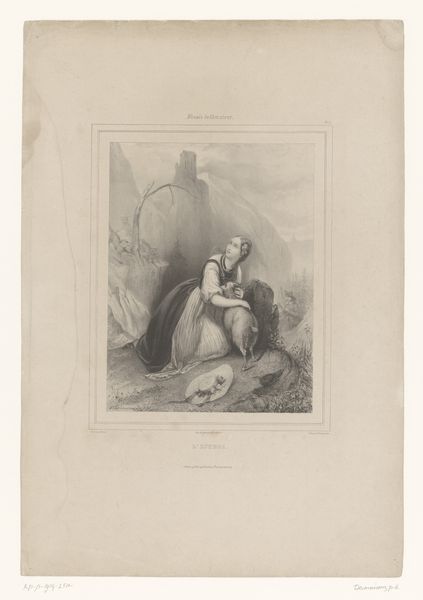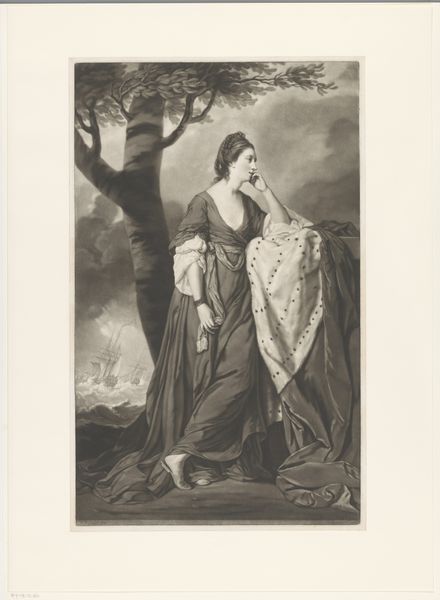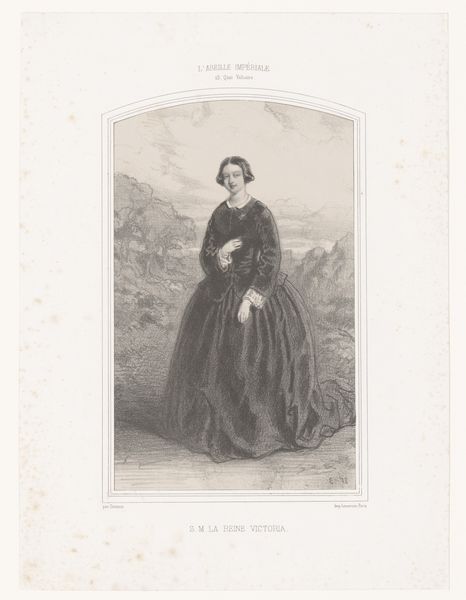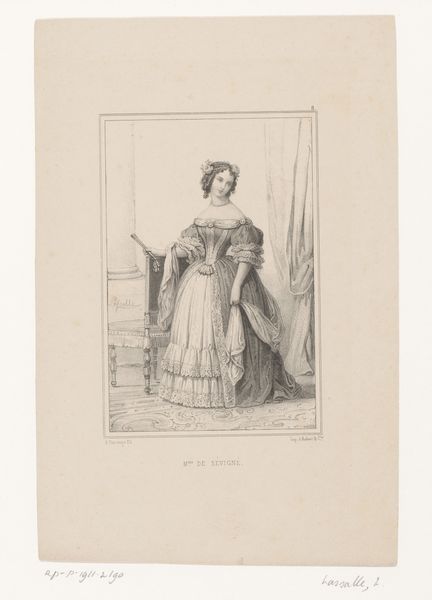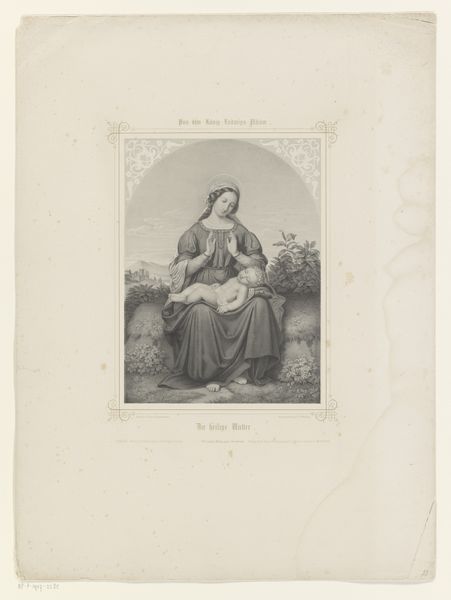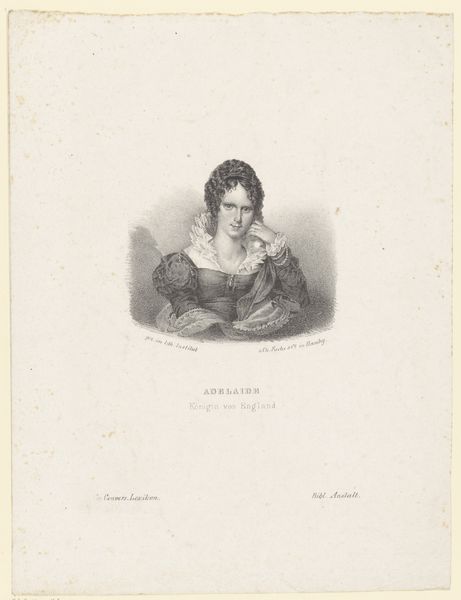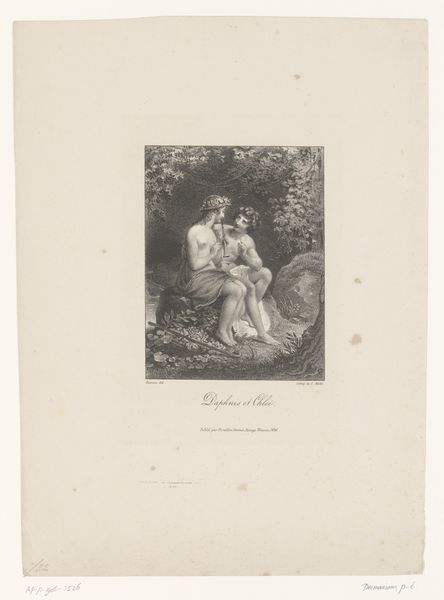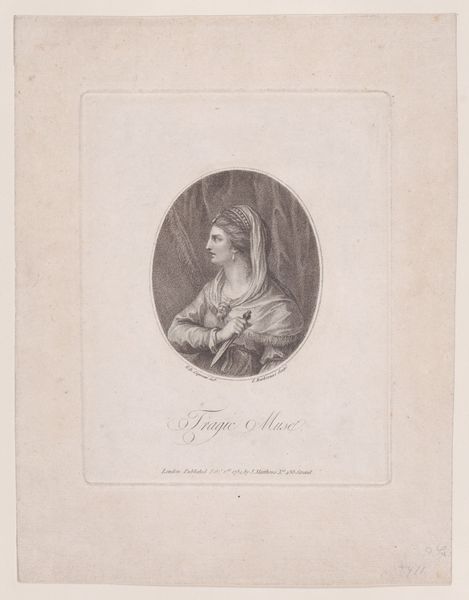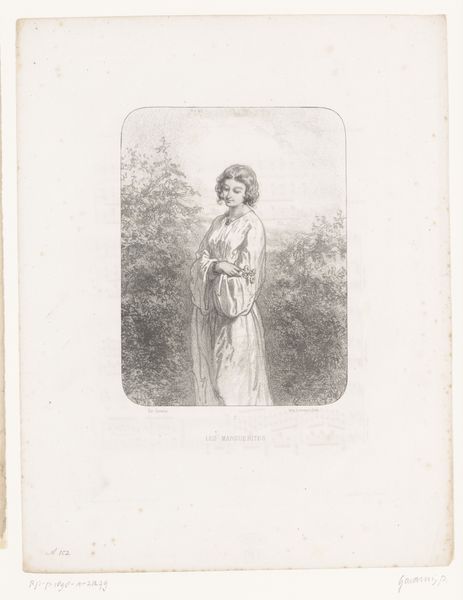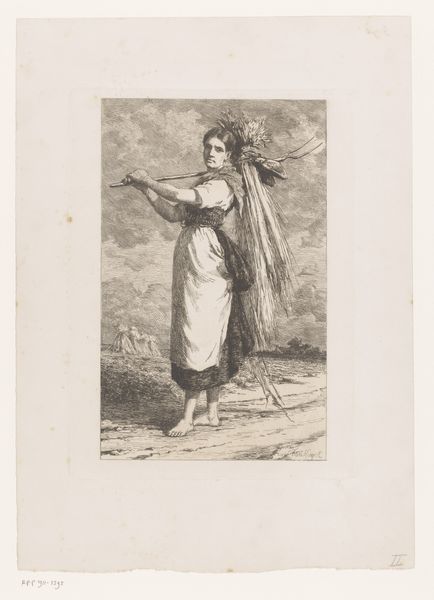
drawing, lithograph, print
#
portrait
#
pencil drawn
#
drawing
#
light pencil work
#
lithograph
# print
#
pencil sketch
#
landscape
#
pencil drawing
#
romanticism
#
genre-painting
Dimensions: height 319 mm, width 240 mm
Copyright: Rijks Museum: Open Domain
Curator: Welcome. Before us is "Girl from Procida on a Rock on the Coast," created in 1832 by Alexandre-Marie Colin, a lithograph. It depicts a young woman seated, gazing downwards in apparent thought. What's your initial read? Editor: A sense of melancholy permeates the image. She's positioned between land and sea, belonging wholly to neither. This immediately speaks to themes of liminality and perhaps a disconnect from her environment. The visible city in the distance feels remote, reinforcing this isolation. Curator: The image employs classic Romantic tropes—a solitary figure amidst nature, evoking emotional introspection. Procida, as an island, lends itself to that symbolic isolation. Her garb suggests a regional identity, rooted in a specific culture, and hints at broader romantic themes regarding idealized folk traditions. Editor: It's interesting how Colin frames her as a representation of place. There’s a certain objectification at play, as if she embodies the "spirit" of Procida, but through a colonial or outsider’s gaze. We should examine whose gaze and which societal values shaped this portrait. Who is the subject *for*? Curator: Precisely. And how her identity is potentially flattened, repackaged as a symbol for outsiders. Her downward gaze prevents true engagement. Is it humility, shame, melancholy...or the artist taking control of our access? It becomes a complex game of visual semantics, where each detail can subtly shift our reading of her character. Even the rock formation becomes meaningful—a metaphor for resilience, perhaps, or just physical constraint. Editor: I’m more drawn to the social position from which this image speaks. Was this created to provoke questions, or reinforce already held notions of Italian peasant life? Consider who was viewing it and what biases they carried. A simple depiction suddenly becomes a window into 19th-century social dynamics. Curator: Undoubtedly, these pieces were commodities consumed by the urban and elite class in the North, romanticising and, at times, mythologising simpler ways of living. Editor: Thanks. It reminds us that even seemingly benign images participate in broader conversations about representation and cultural power. Curator: A good reminder, indeed.
Comments
No comments
Be the first to comment and join the conversation on the ultimate creative platform.
